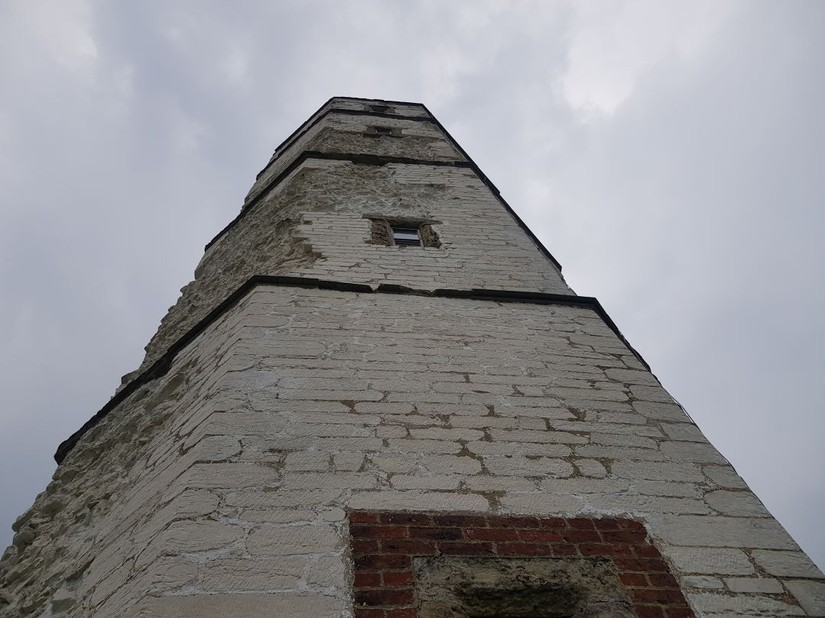Flamborough Old Lighthouse: Lighting the way since the 1600s
20/11/2021 | Chris Kolonko
In this blog we’ll be taking a quick look at one of the Humber Discovery Programme’s most unique maritime buildings.

The limestone a promontory of Flamborough Head, which sticks out into the North Sea, has acted as a navigation beacon and landmark for mariners for many years. But, this useful landmark can also prove treacherous if the weather changes or during the dark, with many vessels running aground along Flamborough Head in stormy weather and at night in the past.
In the days before GPS navigation and radar, local mariners would often make do with dead reckoning, experience, visible landmarks, and lighthouses to ensure their safe passage along coastal waters.
Flamborough’s Lighthouses

Flamborough has a pair of lighthouses, both of which were built at very different times for very different reasons. Conveniently, they can both be found on Lighthouse Road.
Flamborough is a very convenient place to build a lighthouse, because the light can be seen from both North, East and South; and during the day (weather permitting!) the white towers are visible out to sea from several directions and from a surprising distance.
During some recent work at Tunstall, about 23 miles South, both Lighthouses were visible in the clear conditions!

Old Lighthouse, Odd Origins

Also known as the Chalk Tower, Flamborough’s Old Lighthouse is a rare architectural survival of a complete 17th century lighthouse and as such is Grade II* listed and a Scheduled Monument.
The Chalk Tower also has a really fascinating back story!
Built between 1669 and 1674 by Sir John Clayton and George Blake, the tower was intended to act as both a daylight navigation marker, hence it being built from bright-white chalk, as well as lighthouse at night, where a fire would be lit on top of the tower.
Now, this is what sets the Flamborough Chalk Tower apart is that it was built as a business venture! The idea on paper was that passing ships would pay a tax for using the lighthouse when they made port. This tax was also intended to pay for the cost of fuel for the fire lit on top of the tower. The Flamborough Chalk Tower was one of four that were planned to be built and is the only example that survives today, of the two that are believed to have been built.
Needless to say, the business venture didn’t work out. The tax was voluntary, so many sailors simply refused to pay or denied that they travelled past the lighthouse. Sir John Clayton ended up bankrupt as a result of his failed business venture.
After the tower fell out of use, its history becomes a bit sketchy. It’s possible the tower was used as part of the visual semaphore telegraph network. Such a network existed between Hull and Spurn.
It’s also possible that the tower was used for early radio communications and as part of the Royal Naval Shore Signal Station (try saying that really quickly!), later a Lloyds Signal Station. But information to corroborate such use is hard to find. So, if you can help us find out more, we’d love to hear from you!
Illuminating Architecture
On the outside, the Old Lighthouse has some simple architectural features that on the outside, may appear decorative or purely functional but have a practical purpose.
Firstly, looking around the tower you will spot this trigpoint, which indicates that the tower sits on a high point in the landscape. This provides a prominent platform for the tower, with great visibility out to sea towards the North, East and South.

The outer surfaces of the octagonal tower feature three bands of flat stone. These bands indicate the three internal floors of the tower, not including the roof. The primary function of this was to provide a stable platform for the floors. These bands of stone also provided a secondary function. Sailors out to sea could look at the tower, count how many floors they could see, then estimate how far out to sea they were during the day.

The combination of the landscape vantage point and the architectural design of the tower makes it a very interesting structure and landscape. It was clearly well thought out and designed, despite the business venture being less so!
The Old Lighthouse Today
Today, the old Lighthouse is looked after by The Friends of the Chalk Tower Flamborough, a community group formed to raise awareness of the historic building. They also provide annual open days during the Summer, where you can take a look inside the tower and learn about Flamborough’s local history. So, if you’re ever in the area be sure to see if the Tower will be open.
Also be sure to check out our virtual Flamborough Low Tide Trail to digitally explore the area’s wider history and archaeology.








